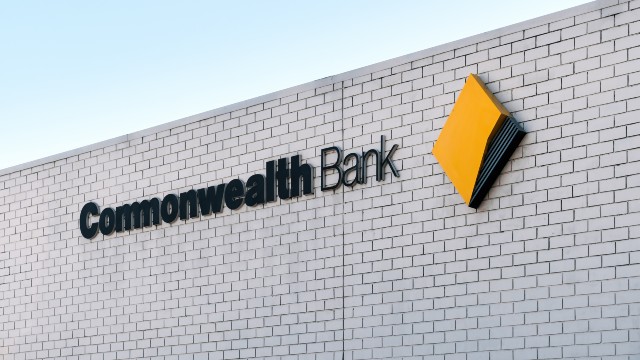
StepPay, which is available to up to four million Commonwealth Bank (CBA) customers, can be downloaded from today. According to the major bank, over 86,000 customers pre-registered for the service.
CBA was the first major bank in Australia to announce its own buy now pay later offering.
The service is set to take on the likes of Afterpay and Zip, as well as US payments giant PayPal, which recently launched a buy now pay later (BNPL) service of its own in Australia.
It also follows the December launch of CBA’s first no-interest credit card, the CommBank Neo card, which was dubbed an alternative to BNPL.
Interestingly, StepPay will be offered side-by-side with Klarna, which is still available in the CommBank app. CBA has part-owned the Australian arm of Swedish-based BNPL business Klarna since its launch here over a year ago.
Here are the key details on StepPay. We’ve also crunched the numbers to see how CBA’s offering could stack up on late fees compared to some of its largest peers.
What is StepPay and how does it work?
StepPay is a digital card that customers will be able to add to the CBA mobile app or their digital wallet and use anywhere Mastercard is accepted. It is available for purchases between $100 and $1,000, with payments split into four instalments each fortnight and charged to an eligible CBA bank account. Payments under $100 are charged upfront in one go, like an ordinary purchase from a transaction account.
CBA says there are no ongoing fees or foreign transaction fees for customers, and businesses don’t have to pay any additional merchant fees above what they already pay for customers to pay with a CBA debit or credit card. This is a point of difference from several other BNPL providers, including Afterpay, where merchants are typically required to pay a certain amount per transaction when a customer pays with the service.
CBA will charge a late fee of $10 per missed BNPL instalment, although this will be capped at $120 per year.
Is there a credit check?
Yes, the StepPay product is only available to CBA customers who pass internal credit assessments and external credit checks, according to CBA. The bank said it would apply “robust criteria” to approve customers based on specific eligibility and credit assessments. For instance, in announcing the BNPL service in March, the bank said eligible customers would be able to apply for the product “where they show evidence of a regular salary deposited into a CBA transaction account which can cover repayment instalments”.
How does StepPay compare to Afterpay, Klarna and Paypal?
Our research analysts crunched the numbers on a hypothetical $500 purchase and found Afterpay and Klarna generally charged higher fees for late payments. There are no fees charged by any of the providers if payments are made on time, but in this scenario the fees can potentially increase as payments are missed and as a customer’s repayments are received further and further away from the original due date. PayPal’s Pay in 4 does not charge late payment fees when customers miss a payment.
Potential late fees on a $500 purchase
← Mobile/tablet users, scroll sideways to view full table →
| Payments history | Afterpay | StepPay | Klarna | PayPal Pay in 4 |
|---|---|---|---|---|
| Pay on time | $0 | $0 | $0 | $0 |
| Miss one payment, repay 5 days after due date |
$10 | $10 | $15 | $0 |
| Miss one payment, repay 8 days after due date |
$17 | $10 | $15 | $0 |
| Miss two payments, repay 5 days after due date |
$20 | $20 | $30 | $0 |
| Miss two payments, repay 8 days after due date |
$34 | $20 | $30 | $0 |
Source: www.canstar.com.au. Prepared on 18/08/2021.
Why the spotlight on fees?
A damning report by financial regulator ASIC, released in November 2020, found more than one in five consumers in the previous year had struggled to scrape together the funds to pay for bills in order to make their BNPL payments on time, having missed payments for household bills, credit cards and mortgages, and even cut back on meals in some cases.
Despite these endeavours, 21% of BNPL users surveyed said they’d missed a payment in the last 12 months to November, adding $43 million to the pockets of BNPL providers from missed payment fees during the 2018-19 financial year, an increase of 38% compared to the previous financial year.
Some buy now pay later providers have sought to address this by signing up to a voluntary ‘code of practice’, effective from 1 March 2021, which they drafted in consultation with ASIC. The code sets out the minimum standards participating companies need to meet, including a cap on late fees, credit checks being required on transactions of more than $2,000 and a minimum age of 18 years for customers to be able to use the services.
A CBA spokesperson told Canstar in March that the organisation was already highly regulated due to its operations as a bank, but it may look at applying the voluntary code of practice to StepPay.
If you are one of the many Australians using or thinking of using buy now pay later services, you may want to compare providers and consider if it’s the right payment option for you by taking into account the pros and cons, as well as any fees and charges involved:
This story has been updated. It was originally published 17 March, 2021.
Thanks for visiting Canstar, Australia’s biggest financial comparison site*
This content was reviewed by Sub Editor Tom Letts as part of our fact-checking process.







Share this article